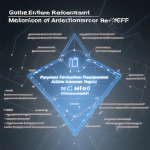Arming Against AI Sabotage: A Deep Dive into Adversarial Machine Learning Libraries
The Silent Threat: Adversarial Attacks on Machine Learning
In the high-stakes arena of artificial intelligence, where algorithms increasingly govern critical decisions, a subtle but profound threat looms: adversarial attacks. These are carefully crafted inputs designed to fool machine learning models, causing them to misclassify data with potentially devastating consequences. Imagine a self-driving car misinterpreting a stop sign as a speed limit sign, or a medical diagnosis system misreading a cancerous tumor as benign. The implications are far-reaching, demanding robust defenses against these digital saboteurs.
This article delves into the world of adversarial machine learning libraries – ART (Adversarial Robustness Toolbox), Foolbox, and CleverHans – providing a comparative analysis to equip machine learning practitioners and security researchers with the knowledge to navigate this complex landscape. The rise of adversarial machine learning underscores a critical vulnerability in AI systems: their susceptibility to carefully designed perturbations. These attacks aren’t random noise; they are meticulously engineered to exploit the inherent weaknesses in a model’s decision boundaries.
For example, in cybersecurity, an attacker might subtly alter network traffic to evade intrusion detection systems, or manipulate spam filters to deliver malicious emails. In the financial sector, algorithmic trading models could be tricked into making erroneous trades, leading to significant financial losses. Understanding these vulnerabilities is paramount for developing robust AI systems that can withstand malicious interference. Adversarial attacks pose a significant challenge to machine learning security, demanding a proactive and multifaceted approach. The consequences extend beyond mere misclassification, potentially leading to compromised systems, manipulated data, and erosion of trust in AI technologies.
Consider the implications for facial recognition systems used in law enforcement: an adversary could subtly alter an image to cause a false identification, leading to wrongful arrests or enabling criminals to evade detection. Addressing these threats requires a deep understanding of attack methodologies, robust defense mechanisms, and continuous monitoring of AI systems in real-world environments. Libraries like ART, Foolbox, and CleverHans are essential tools in this ongoing battle against adversarial threats. Furthermore, the increasing complexity of AI models, particularly deep neural networks, exacerbates the challenge of adversarial defense. These models, while powerful, often operate as ‘black boxes,’ making it difficult to understand their decision-making processes and identify potential vulnerabilities. Adversarial machine learning libraries provide crucial tools for probing these black boxes, allowing researchers and practitioners to explore the model’s weaknesses and develop targeted defenses. By understanding how these attacks work, and by leveraging the capabilities of libraries like ART, Foolbox and CleverHans, we can strive towards more resilient and trustworthy AI systems.
Meet the Defenders: ART, Foolbox, and CleverHans
Let’s examine the key players in the adversarial defense ecosystem. Each library offers a unique approach to crafting and defending against adversarial attacks, reflecting different design philosophies and target user bases. These libraries are essential tools for researchers and practitioners aiming to bolster machine learning security and understand the nuances of AI security vulnerabilities. Understanding their strengths and weaknesses is crucial for selecting the right tool for a given task. The ongoing development and refinement of these libraries are a testament to the evolving landscape of adversarial machine learning.
ART (Adversarial Robustness Toolbox): Developed by IBM, ART is a comprehensive framework designed to evaluate and improve the robustness of machine learning models. Its architecture is modular, allowing users to easily integrate different attack and defense techniques. Key features include support for a wide range of attack types (e.g., FGSM, PGD, DeepFool), defense mechanisms (e.g., adversarial training, input preprocessing, certified defenses), and compatibility with various platforms (TensorFlow, PyTorch, scikit-learn, Keras, MXNet). ART’s API is relatively well-documented, but its complexity can present a learning curve for beginners.
However, this complexity is often justified by its extensive capabilities; for instance, ART’s certified defense implementations allow for provable guarantees of robustness against certain classes of adversarial attacks, a feature not commonly found in simpler libraries. This makes ART particularly valuable for applications where security is paramount, such as in safety-critical systems. The active development and maintenance by IBM also ensure that ART remains up-to-date with the latest advancements in adversarial machine learning. Foolbox: Foolbox prioritizes simplicity and ease of use.
It focuses primarily on generating adversarial examples, offering a streamlined API for common attack algorithms. While its defense capabilities are less extensive than ART’s, Foolbox excels in its user-friendly design and excellent documentation. It supports TensorFlow, PyTorch, and JAX. This focus on simplicity makes Foolbox an excellent choice for educational purposes and for quickly prototyping adversarial attacks. Its clear and concise API allows researchers to rapidly test the vulnerability of machine learning models without getting bogged down in complex configurations.
For example, generating an FGSM attack with Foolbox can be achieved with just a few lines of code, making it accessible even to those new to the field of adversarial machine learning. CleverHans: One of the earliest adversarial machine learning libraries, CleverHans, created by Google Brain, provides a collection of attack implementations, primarily focused on TensorFlow and PyTorch. While its development has slowed compared to ART and Foolbox, it remains a valuable resource for understanding fundamental adversarial attack techniques.
CleverHans’ API is relatively straightforward, but its limited defense mechanisms and framework support make it less versatile for comprehensive robustness evaluation. However, its historical significance cannot be understated; many of the foundational concepts in adversarial machine learning were first implemented and explored within CleverHans. It serves as a valuable educational resource for understanding the origins of adversarial attacks and the evolution of machine learning security. Researchers often use CleverHans to reproduce classic attack results and gain a deeper understanding of the field’s history.
Beyond these three, other notable libraries and tools are emerging in the adversarial machine learning landscape. These include libraries specializing in specific types of attacks or defenses, such as those focused on adversarial examples in natural language processing or tools for verifying the robustness of neural networks. Furthermore, cloud-based platforms are increasingly offering adversarial machine learning services, allowing users to test the robustness of their models without the need for local installations or specialized hardware. The continuous emergence of new tools and techniques underscores the dynamic nature of this field and the ongoing need for vigilance in the face of evolving threats to machine learning systems. These advancements collectively contribute to a more secure and reliable AI ecosystem.
Head-to-Head: Performance, Robustness, and Framework Support
Performance, robustness, and model/framework support are critical factors when choosing an adversarial machine learning library for your specific needs. ART (Adversarial Robustness Toolbox) generally exhibits good performance, offering a wide array of attack and defense mechanisms. However, its extensive feature set, while a strength for comprehensive evaluations, can impact speed and memory usage, especially when compared to the more lightweight Foolbox. Foolbox’s streamlined design often translates to faster attack generation, particularly for simple attacks like FGSM (Fast Gradient Sign Method), making it a suitable choice for rapid prototyping and educational purposes in machine learning security.
CleverHans, while historically significant in the field of adversarial machine learning, may exhibit performance limitations due to its relatively older codebase compared to ART and Foolbox. Therefore, a careful performance evaluation, considering the specific attack types and model architectures, is crucial. Robustness against various adversarial attacks is paramount in ensuring the reliability of AI systems, and the choice of library significantly influences the effectiveness of implemented defenses. ART’s wide range of defense mechanisms provides greater flexibility in mitigating different attack types, making it well-suited for building robust machine learning models.
Its capabilities extend to defenses against both white-box and black-box adversarial attacks. Foolbox, with its comparatively limited defense capabilities, is less suitable for comprehensive robustness evaluations in complex scenarios. CleverHans primarily focuses on attack generation, offering minimal built-in defense options, which necessitates the integration of external defense strategies for enhancing AI security. Selecting a library with appropriate defense mechanisms aligned with the anticipated threat landscape is crucial for bolstering machine learning security. Model and framework support are essential considerations, dictating the ease of integration and applicability of adversarial machine learning libraries within existing workflows.
ART boasts the broadest support, encompassing TensorFlow, PyTorch, scikit-learn, Keras, and MXNet, providing developers with unparalleled flexibility in choosing their preferred deep learning framework. This extensive support is particularly valuable for projects involving diverse model architectures or requiring seamless transitions between frameworks. Foolbox supports TensorFlow, PyTorch, and JAX, covering the most popular deep learning frameworks but lacking support for some of the more specialized or legacy frameworks. CleverHans primarily supports TensorFlow and PyTorch, with limited support for other frameworks, potentially posing challenges for projects reliant on alternative platforms. The choice of library should align with the project’s existing infrastructure and the long-term roadmap for model development and deployment, ensuring compatibility and minimizing integration overhead in the realm of AI security.
Hands-On: Implementing FGSM Attacks
Let’s illustrate how to implement the Fast Gradient Sign Method (FGSM), a foundational adversarial attack, using each library. FGSM, a white-box attack, leverages the gradient of the loss function with respect to the input data to craft adversarial examples. It perturbs the input by a small amount in the direction that maximizes the loss, effectively ‘fooling’ the model. Understanding FGSM is crucial for grasping the core principles of adversarial machine learning and building more robust AI systems.
The following examples demonstrate how each library simplifies the implementation of this powerful attack, abstracting away much of the underlying mathematical complexity. These examples are tailored for TensorFlow, a popular framework in both machine learning and adversarial machine learning research. However, the principles can be adapted to other frameworks like PyTorch. ART:
python
from art.attacks.evasion import FastGradientMethod
from art.estimators.classification import TensorFlowV2Classifier # Assuming you have a trained TensorFlow model and data
classifier = TensorFlowV2Classifier(model=model, nb_classes=10, input_shape=(28, 28, 1), loss_object=loss_object, train_step=train_step, clip_values=(0, 1))
attack = FastGradientMethod(estimator=classifier, eps=0.1)
x_train_adv = attack.generate(x=x_train)
In ART (Adversarial Robustness Toolbox), the `TensorFlowV2Classifier` wraps the existing TensorFlow model, providing a consistent interface for adversarial attacks. The `FastGradientMethod` class then implements the FGSM attack. The `eps` parameter controls the magnitude of the perturbation. The `generate` method crafts the adversarial examples. ART’s strength lies in its modular design, allowing for easy experimentation with different attacks and defenses. Its comprehensive nature makes it a valuable tool for researchers and practitioners focused on machine learning security and AI security.
Foolbox:
python
import foolbox as fbx
import eagerpy as ep # Assuming you have a trained model and data
fmodel = fbx.models.TensorFlowModel(model, bounds=(0, 1))
attack = fbx.attacks.FGSM()
epsilons = 0.1
_, clipped, success = attack(fmodel, images, labels, epsilons=epsilons) Foolbox offers a more streamlined approach. The `TensorFlowModel` wraps the TensorFlow model, similar to ART. The `FGSM` class implements the attack. The `epsilons` parameter, again, controls the perturbation magnitude. Foolbox emphasizes simplicity and ease of use, making it an excellent choice for quick prototyping and educational purposes.
Its focus on speed and efficiency makes it particularly useful for evaluating the robustness of machine learning models against adversarial attacks in resource-constrained environments. Foolbox’s design philosophy caters to users who prioritize rapid experimentation and a minimal learning curve. CleverHans:
python
import cleverhans.tf2.attacks.fast_gradient_method as fgm
import tensorflow as tf # Assuming you have a trained TensorFlow model and data
adv_x = fgm.fast_gradient_method(model, x_train, eps=0.1, norm=np.inf) CleverHans provides a direct implementation of FGSM via the `fast_gradient_method` function.
The `eps` parameter controls the perturbation, and `norm` specifies the norm to use (in this case, infinity norm). CleverHans, known for its focus on adversarial machine learning research, offers a collection of well-established attack and defense methods. Its close ties to the TensorFlow ecosystem make it a natural choice for researchers working with that framework. The library’s emphasis on established techniques and its clear, concise code contribute to its widespread adoption in the machine learning security community.
These examples demonstrate the varying API styles and levels of abstraction offered by each library. Choosing the right library depends on the specific needs of the project, balancing factors such as ease of use, performance, and the breadth of supported attacks and defenses. All three libraries play a crucial role in advancing the field of adversarial machine learning and improving the robustness of AI systems against adversarial attacks. Understanding the strengths and weaknesses of each library is essential for researchers and practitioners working to build more secure and reliable machine learning models.
Choosing the Right Tool: Strengths, Weaknesses, and Future Trends
Each library presents a unique risk-reward profile. ART (Adversarial Robustness Toolbox), with its backing from IBM, operates as a comprehensive workbench for researchers tackling complex robustness evaluations and intricate defense strategies. Its strength lies in its modular design, supporting a wide array of attacks, defenses, and model frameworks like TensorFlow and PyTorch. However, this richness comes at a cost: ART’s steep learning curve and computational overhead can be a barrier, particularly for smaller teams or rapid prototyping scenarios.
Foolbox, conversely, champions simplicity. Its ease of use and focus on speed make it ideal for educational purposes and quickly testing the vulnerability of models to common adversarial attacks like FGSM. While Foolbox excels at rapid assessment, its limited arsenal of defense mechanisms restricts its utility in comprehensive machine learning security audits. CleverHans, while historically significant for pioneering many foundational adversarial attack implementations, now lags behind ART and Foolbox in terms of active development and the breadth of its features.
Its primary value lies in understanding the evolution of adversarial machine learning techniques. Community support and consistent maintenance are vital when selecting an adversarial machine learning library. ART benefits from a relatively active community and the resources of IBM, ensuring ongoing development and support for new features and security patches. Foolbox also boasts a dedicated community that actively contributes to its development and provides support to users. This is crucial for addressing emerging threats and maintaining the library’s relevance.
CleverHans, however, suffers from slower development, which could pose challenges in addressing the latest adversarial tactics and maintaining compatibility with newer machine learning frameworks. Selecting a library with robust community support ensures access to expertise and timely updates, mitigating the risks associated with evolving adversarial threats. Consider the long-term goals and resource constraints when choosing a library. If the objective is cutting-edge research into novel defense mechanisms or comprehensive robustness evaluations across diverse models and frameworks, ART’s extensive capabilities justify its complexity.
For educational purposes, rapid prototyping, or quick vulnerability assessments, Foolbox’s simplicity and speed make it a more practical choice. CleverHans can serve as a valuable resource for understanding the historical context of adversarial machine learning and implementing basic attacks, but its limited development suggests it should not be a primary tool for ongoing security efforts. The choice hinges on balancing the need for comprehensive features with the practical considerations of ease of use, performance, and community support.
Looking ahead to 2030-2039, adversarial machine learning libraries will need to adapt to increasingly sophisticated AI systems and adversarial techniques. The integration of generative AI for creating more realistic and challenging adversarial examples will become crucial. Similarly, reinforcement learning will likely be employed to develop adaptive attack strategies that can bypass existing defenses. We can anticipate increased automation in robustness evaluation, with libraries providing tools for automatically generating and testing a wide range of adversarial attacks.
The development of certified defenses, which provide mathematical guarantees of robustness, will also be a key area of focus. Furthermore, seamless integration with cloud-based ML platforms and specialized hardware accelerators will be essential for handling the computational demands of adversarial training and defense. The rise of federated learning will necessitate new approaches to adversarial robustness that account for decentralized data and model training, requiring libraries to support privacy-preserving adversarial defense techniques. These libraries will play a critical role in ensuring the security and reliability of AI systems in an increasingly complex and adversarial landscape.


